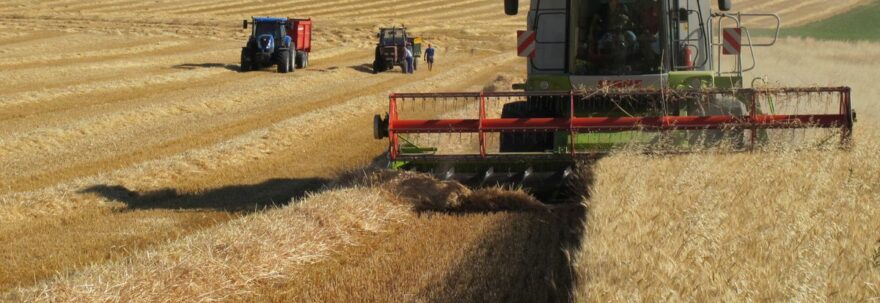The harvests in the fields of Castilla y León, the region with the highest production in all of Spain, are languishing, suffocated by the high temperatures and low rainfall in the last months.
However, they are not the only ones where crops decrease, since the organizations of the sector estimate a decrease in the collection between 20 and 40% in all of Spain compared to a standard exercise.
Although the figures are still provisional until the end of the harvest at the end of July, the prediction is to reach a production of 17.2 million tons of cereals. “Compared to last year, we may be talking about 7 million less, which represents a reduction of 30%” announced from the agrarian organization ASAJA. These are figures similar to those considered by other agricultural organizations, such as COAG and UPA, which warn of the impact on prices.
The situation is especially serious in Castilla y León, the largest producer of cereals in Spain and where production can fall by more than 50% in some areas compared to a standard year. “In Zamora, the reduction can reach up to 60%”, says the person in charge of grain at COAG, José Roales. Behind are Castilla-La Mancha and Aragón, with decreases of around 21%, according to data from Asaja.
Why has this situation occurred?
No cereal escapes this decrease in the harvest. Barley, wheat, peas, sunflower, corn… They have all been affected by this reduction, which is due to the low rainfall at the beginning of the year -with few months of January and February with hardly any rain- and the premature arrival of heat. Beginning in the second half of April, temperatures were very high, with heat strokes and little rain.
Faced with this situation, farmers are clear about the responsible. “For six or eight years, all crops, vegetables, cereals, wine have been brought forward… It is due to climate change. Springs are increasingly scarce of water, the heat is greater… This occurs in the most crucial time for the grain.
To face these heats and avoid the loss of the harvest, agricultural organizations are working with seed houses to try to develop grains with better tolerance to high temperatures. “We started about two years ago to try to develop more resistant cereals, because we saw that it was not going to be a one-time thing. However, it will not be ready for another four or five years,” according to the agricultural organizations.
The war in Ukraine contributes to aggravate this shortage of crops, to which Spain annually bought a considerable amount of cereal to satisfy internal demand as it is a country with a deficit, especially in corn and wheat. These imports complemented the between 22 and 25 million tons of nationally produced grain, up to the 35 necessaries to satisfy the consumption of animals and humans.
Now, the invasion of Ukraine by Russia complicates these imports and will force Spain to acquire these foods from other countries, which will be much more expensive. It will have to be imported from Argentina, Brazil or the United States, but freight rates have nothing to do with those of two years ago, with the increase in fuel prices.
Farmers have faced this season a considerable increase in prices in practically all the raw materials and resources they need: diesel, electricity, seeds, fertilizers, phytosanitary products.
These complications will also be transferred to the pockets of citizens, according to the farmers. “We are going to see it in inflation. Cereal is basic for all food. If you have to pay much more to bring it, all animal products are going to be much more expensive. If producing a kilo of meat, an egg or a liter of milk costs twice as much, it will have to affect the consumer”, highlights the Secretary of Agriculture of UPA.



